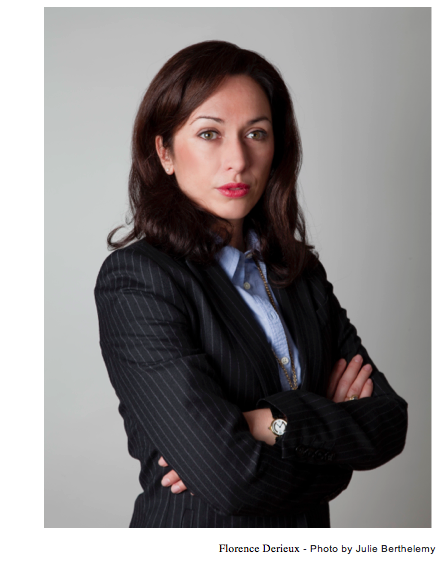Organized for the third consecutive year by curator Florence Derieux, Parcours spotlights 23 artworks installed in Münsterplatz, Basel’s historic plaza constructed around Münster cathedral.
How did Parcours come about?
I select the projects submitted by participating galleries at Art Basel. Every year the organizers choose an area in the town and once the zone is decided, that’s when I come in. This year, the configuration of the space is very different, we’re returning to the same space selected for the first parcours. We are in the oldest part of the town, one of the most historical parts, surrounded by museums and cultural institutions.
 What new elements did you wish to introduce?
What new elements did you wish to introduce?
Right from the beginning I wanted to develop partnerships. I wanted Parcours to be a tool, implemented to create an experimental model over a five-day period. What was important for me was to create an experience, to provoke engaged reflection.
What we call public art, such as a sculpture installed in a town, is not something that stays with us. How do we change that? It's here that the question of space really matters. I myself am on the outside, I am French, I work in another context. I didn’t know the town, and that's why Art Basel created the parcours. This edition is the making of what the Parcours can be.
The general public - beside that of the contemporary art scene - are very intrigued by contemporary art, you only have to look at the queues for the temporary exhibitions which are continually increasing. Our interest lies in creating a real physical and intellectual confrontation between the public and the art. Audiences demand an engaging environment and they want to have the possibility to interact with the artwork.
 And in practical terms?
And in practical terms?
I’ve met all the museum directors, the city of Basel is very much engaged and attentive, moving with a completely different dynamic. The projects are sculpted around beautiful settings and the context enables the artworks to take on a particular meaning.
Ugo Rondinone’s piece the gracious is new and was made especially for this Parcours. Even though we have seen the series exhibited around the world, in New York and in Mexico, the structure was completely different.
I live in Reims and I know the issues with the cathedral, which takes us back to the Renaissance. God is no longer the central reference, He is now the man responsible for comprehension and organization in the world. Exhibiting the sculpture in front of the cathedral on this scale, a confrontation between the human figure and God, is something extraordinary. The Münsterplatz is human scale, but straight away, we are confronted with this stone figure and immense cathedral.
Do you have other examples?
Nate Lowman’s eight crosses - Multicolored Tow Truck - are made with elements from NYPD trucks designed to remove illegally parked cars from the street. It is illegal to take police property, but the artist recovered two. The artworks are new, created specially for the parcours. But they are reminiscent of other pieces in the series, but here, they were thought up for the outside for the first time.
It is the same for Untitled (Evil exists where good men do nothing), the guillotine by Piero Golia is presented in the town hall and where the Swiss parliament meet. The artist is Italian, I am French, it is significant to show a guillotine and lying down in an inoffensive way. Yet for the first time, the artist decided to exhibit it standing, once we had the go-ahead from the authorities. But I won’t stop by exhibiting a guillotine in the town hall.
A whole research project is underway with Peter Horse, who wrote the constitution ratifying and validating independance of confederates. The drafting of this confederation is based on what happened in France. He himself was born in Nantes, France, and admired the Revolution. If any executions by guillotine took place in this area, I couldn't say.
I’ll refer to something mentioned by John Cage in an interview, testing art against life. Traditional models have run dry, they are empty, and there is a need for new models, and this is where art can take on a key role.









